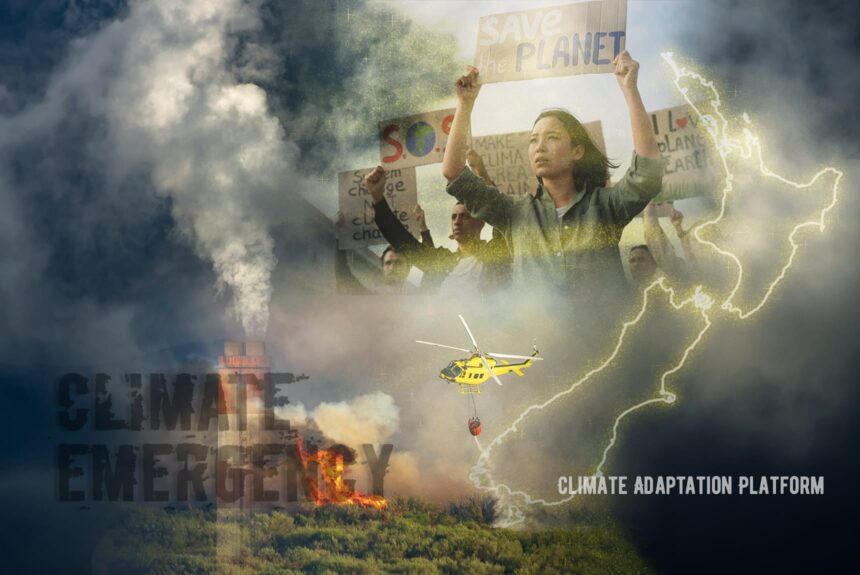The New Zealand Government declared a climate change emergency on 2 December 2020 and committed to a carbon-neutral government by 2025. Its Prime Minister Jacinda Ardern calls the climate crisis “one of the greatest challenges of our time”.
In 2020, the country’s temperature was 1.14°C above average, with 17 locations covering 75% of New Zealand’s population, setting record-breaking mean temperatures.
The same year has also seen 17 councils in New Zealand declaring a climate emergency, coving over three-quarters of the population.
NIWA’s climate scientist confirmed winter this year, 2022, as the country’s warmest and wettest winter on record, after looking at a century’s worth of data.
Declaring a Climate Emergency means that the country and local councils acknowledge the scientific evidence and advice that there is a small window for action to avoid the most damaging effects of climate change.
It also declares the following: the world requires urgent action by all levels of government; that human-induced climate change represents one of the greatest threats to humanity, civilisation, other species, and the life-supporting capacity of air, water, soil, and ecosystems; and that it is possible to prevent the most harmful outcomes, if societies take sustained emergency action, including local councils.
Mitigating climate change’s impact will require councils to take actions that include the following:
- Recognise the potential for technology, human expertise, and capacity to help reduce and adapt to this global challenge.
- Collaboration with the community and action from authorities, stakeholders, and individuals is essential.
- Evaluate how the council’s plans, policies and programmes can address the climate emergency and ensure that climate change strategy is embedded into the council’s strategic plans.
- Collaboration between the government, all sectors and members of the society – giving everyone a voice in the debate and decision-making on what mitigation and adaptation actions to take.
- Transparency and accessibility of climate change information, ensuring it is communicated effectively to the community, will encourage engagement and participation, which is key to achieving climate action goals and building resilience.
Councils that declared a climate emergency
Regional councils:
Bay of Plenty Regional Council, Canterbury Regional Council, Hawke’s Bay Regional Council, Greater Wellington Regional Council, Nelson City Council
Territorial authorities:
Whangarei District Council, Auckland Council, Ōpōtiki District Council, Whanganui District Council, Kapiti Coast District Council, Porirua City Council, Hutt City Council, Wellington City Council, Nelson City Council, Christchurch City Council, Queenstown-Lakes District Council, Dunedin City Council
The Climate Emergency declaration emphasises Council’s intention to play a key role in leading the community toward a resilient and low emissions future and implementing adaptive measures that help to manage and minimise risk.
By making the declaration, the Council committed to looking at how its plans, policies and work programmes can support action to address the climate emergency and ensure that it is embedded in all future Council strategic plans.
This declaration was a strong signal to our community of the importance of this issue and the urgent need for collective action.
New Zealand’s contribution to climate change
New Zealand’s total gross emissions account for only 0.17% of the world’s total. The percentage is tiny because of New Zealand’s small population. But when emissions are calculated per capita or person, the country is at the top 17th out of 32 OECD countries.
Its most significant source of CO2 emissions is road transport from the use of fuels and its importation of goods and services overseas.
But when it comes to its GHG emissions – predominantly methane, come to form its agriculture sector, which made up almost half of its total gross emissions in 2018.
NZ Herald reports that to mitigate climate change impacts, New Zealand stopped its new offshore oil and gas exploration permits, overhauled its Emissions Trading Scheme (ETS), invested in green hydrogen, provided a $70 million fund to help Kiwi businesses to switch from coal and gas to cleaner energy, and set up the Climate Change Commission to put together a legislated and binding climate-targets.
However, the government is criticised for not targeting to reduce the biogenic methane emissions enough – which accounts for a third of the country’s gross emissions. Instead, it only requires it to reduce between 24 to 47% by 2050.
Experts weighing on New Zealand’s declaration of climate emergency say that if the gesture only remains symbolic, it should be critical for the communities to hold the government accountable to take real action.
Source:
New Zealand declares a climate emergency. (2020 December 2). Retrieved from https://climateemergencydeclaration.org/new-zealand-declares-a-climate-emergency/
NZ’s warmest and wettest winter on record. (2022, September 2). NIWA. Retrieved from https://niwa.co.nz/news/nzs-warmest-and-wettest-winter-on-record
Morton, J. (2020, December 1). Analysis: What does declaring a ‘climate emergency’ actually do?. NZ Herald. Retrieved from https://www.nzherald.co.nz/nz/analysis-what-does-declaring-a-climate-emergency-actually-do/6U3YQFOLDTZCCBWZ4ETXLHLDOE/



Leave a Reply